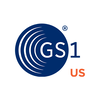Kevin Otto | Source | Senior Director of Community Engagement at GS1 US

Kevin Otto
Kevin is a highly driven, performance-focused leader with an MBA and over 17 years of progressive contributions in strategic supply chain management. He is recognized with multiple leadership awards that represent a passion for excellence in improving strategies and optimizing performance in inventory management, logistics and customer partnerships.
-

GS1 US
Senior Director of Community Engagement
-
7 Industry Experts Weigh In On Blockchain And The Fresh Food Supply Chain
On Jan. 4, 2011, President Barack Obama signed into law the Food and Drug Administration Food Safety Modernization Act (FSMA).
Article -
Electronics Supply-Chain Trust Standards Emerge
Fragmentation is still rampant, but there are signs of progress.
Article
-
First, “supply chain” is an extremely broad subject, affecting everything we acquire anywhere. Electronics are one — admittedly increasingly important — portion of that subject. As a result, it’s possible to find organizations dealing with notions that may not apply to electronics. “Cold-chain” logistics, for example, which are important for food and medicines, have no parallel in the electronics world.
-
In our cross-industry blockchain discussions encompassing healthcare, food service, retail grocery, apparel and general merchandise, supply chain visibility is the first use case that companies are looking at to see how blockchain can fit into their operations. Because GS1 already has universally accepted standards in place for visibility that can be used in blockchain, and other data sharing mechanisms, we are in a unique position to foster interoperability between blockchain users. Essentially, GS1 Standards are fundamental to the evolution of blockchain.


